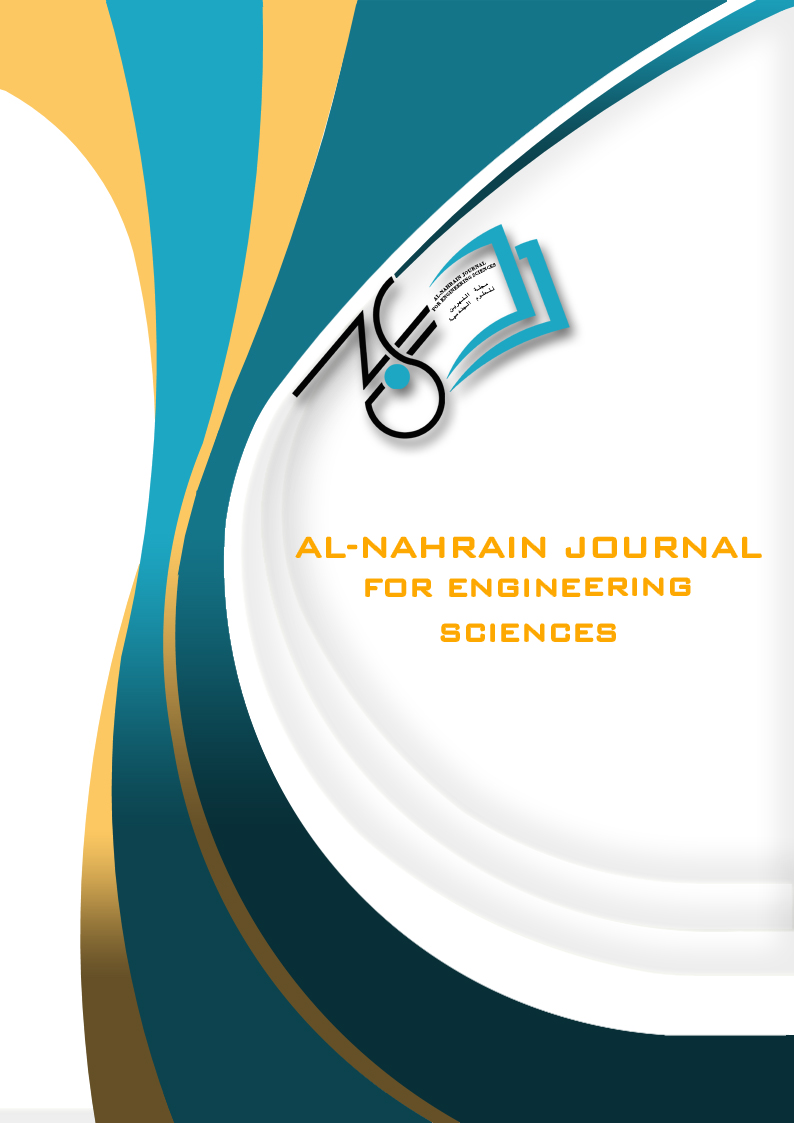Rutting Performance of Hot Mix Asphalt Created Using Both Traditional Superpave Procedure and Bailey Techniques
DOI:
https://doi.org/10.29194/NJES.28030336Keywords:
Rutting Performance, Hot Mix Asphalt, Repeated Load Test, Superpave Method, Bailey TechniquesAbstract
The present investigation looked at whether the Bailey approach to aggregate gradation could be used to construct Superpave HMA blends. It also looked at how this approach influenced the rutting performance associated with these mixes and compared it to mixes of asphalt created by Superpave gradations. The current research included four aggregate gradations: both fine and coarse gradations for the Superpave and Bailey gradation procedures. The repeated loading test was utilized to assess the rutting performance. The findings indicated that temperature, stress level, and aggregate gradation all had a significant impact on rutting performance. In contrast to the other three gradations, the third mixture gradation exhibited the least amount of non-reversible deformation. It translates to pavement that is more resistant to rutting and less susceptible to it.
Downloads
References
A. Kamal and H. Al-Mosawe, “Aspects Influencing the Rutting Performance in Flexible Pavements: Review Article,” Proc. 5th Int. Conf. Buildings, Construction and Environmental Engineering (BCEE5), 2023. Online ISSN: 1551-7616, Print ISSN: 0094-243X.
H. Al-Mosawe, A. Albayati, Y. Wang, and N. S. Mashaan, “An experimental study of granular material using recycled concrete waste for pavement roadbed construction,” Buildings, vol. 12, no. 11, p. 1926, 2022.
DOI: 10.3390/buildings12111926 DOI: https://doi.org/10.3390/buildings12111926
Y. M. Jebur and M. K. Imran, “Evaluation the effect of using polymers on the performance of wearing asphalt mixture,” J. Babylon Univ./Eng., vol. 125, no. 1, 2017.
F. Moghadas Nejad, A. Azarhoosh, and G. H. Hamedi, “Effect of high-density polyethylene on the fatigue and rutting performance of hot mix asphalt–a laboratory study,” Road Mater. Pavement Des., vol. 15, no. 3, pp. 746–756, 2014. DOI: https://doi.org/10.1080/14680629.2013.876443
DOI: 10.1080/14680629.2013.877551
A. H. Abed and A. A. Al-Azzawi, “Evaluation of rutting depth in flexible pavements by using finite element analysis and local empirical model,” Am. J. Eng. Appl. Sci., vol. 5, no. 2, pp. 163–169, 2012.
DOI: 10.3844/ajeassp.2012.163.169 DOI: https://doi.org/10.3844/ajeassp.2012.163.169
F. Safaei and C. Castorena, “Material nonlinearity in asphalt binder fatigue testing and analysis,” Mater. Des., vol. 133, pp. 376–389, 2017. DOI: https://doi.org/10.1016/j.matdes.2017.08.010
DOI: 10.1016/j.matdes.2017.07.059 DOI: https://doi.org/10.1016/j.matdes.2017.07.059
G. T. Shang, O. Takahashi, and R. Maekawa, “Recommended combination of the Bailey parameters in Superpave gradation design for Japanese airfield pavements,” Int. J. Pavement Res. Technol., vol. 6, no. 6, pp. 704–713, 2013.
H. K. Shanbara, “Development of new cold bitumen emulsion mixtures and finite element modelling of predicting permanent deformation,” Ph.D. dissertation, Liverpool John Moores Univ., 2018.
M. M. Hilal, “Prediction of permanent deformation models for asphalt pavements in hot climates,” Ph.D. thesis, Univ. of Baghdad, Iraq, 2011.
R. Imaninasab, B. Bakhshi, and B. Shirini, “Rutting performance of rubberized porous asphalt using Finite Element Method (FEM),” Constr. Build. Mater., vol. 106, pp. 382–391, 2016. DOI: https://doi.org/10.1016/j.conbuildmat.2015.12.134
DOI: 10.1016/j.conbuildmat.2015.12.145 DOI: https://doi.org/10.1016/j.conbuildmat.2015.12.145
H. Fang, J. E. Haddock, T. D. White, and A. J. Hand, “On the characterization of flexible pavement rutting using creep model-based finite element analysis,” Finite Elem. Anal. Des., vol. 41, no. 1, pp. 49–73, 2004.DOI: 10.1016/j.finel.2004.03.002 DOI: https://doi.org/10.1016/j.finel.2004.03.002
Downloads
Published
Issue
Section
License
Copyright (c) 2025 Ali Kamal, Hasan Al-Mosawe, Ahmed I. M. Nassar

This work is licensed under a Creative Commons Attribution-NonCommercial 4.0 International License.
The authors retain the copyright of their manuscript by submitting the work to this journal, and all open access articles are distributed under the terms of the Creative Commons Attribution-NonCommercial 4.0 International (CC-BY-NC 4.0), which permits use for any non-commercial purpose, distribution, and reproduction in any medium, provided that the original work is properly cited.














